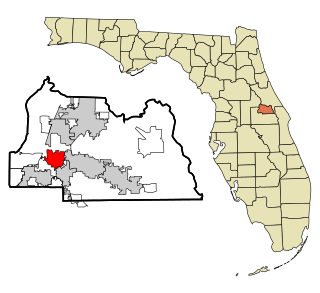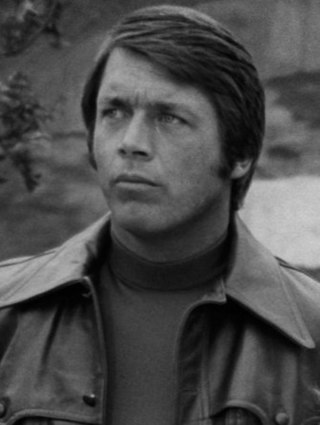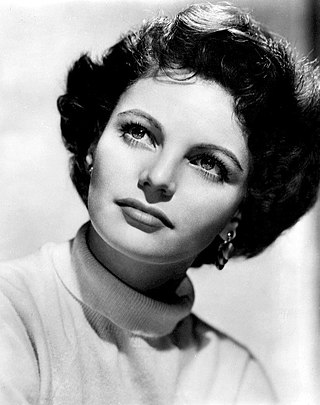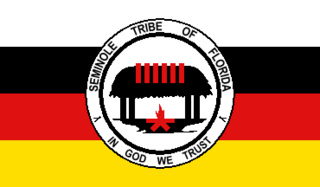
The Seminole Wars were a series of three military conflicts between the United States and the Seminoles that took place in Florida between about 1816 and 1858. The Seminoles are a Native American nation which coalesced in northern Florida during the early 1700s, when the territory was still a Spanish colonial possession. Tensions grew between the Seminoles and settlers in the newly independent United States in the early 1800s, mainly because enslaved people regularly fled from Georgia into Spanish Florida, prompting slaveowners to conduct slave raids across the border. A series of cross-border skirmishes escalated into the First Seminole War in 1817, when General Andrew Jackson led an incursion into the territory over Spanish objections. Jackson's forces destroyed several Seminole and Black Seminole towns and briefly occupied Pensacola before withdrawing in 1818. The U.S. and Spain soon negotiated the transfer of the territory with the Adams-Onis Treaty of 1819.

Longwood is a city in Seminole County, Florida, United States. The population was 15,087 at the 2020 census. It is part of the Orlando–Kissimmee–Sanford, Florida Metropolitan Statistical Area.

The Seminoles are a Native American people who developed in Florida in the 18th century. Today, they live in Oklahoma and Florida, and comprise three federally recognized tribes: the Seminole Nation of Oklahoma, the Seminole Tribe of Florida, and the Miccosukee Tribe of Indians of Florida, as well as independent groups. The Seminole people emerged in a process of ethnogenesis from various Native American groups who settled in Spanish Florida beginning in the early 1700s, most significantly northern Muscogee Creeks from what is now Georgia and Alabama.

The Second Seminole War, also known as the Florida War, was a conflict from 1835 to 1842 in Florida between the United States and groups of people collectively known as Seminoles, consisting of Native Americans and Black Indians. It was part of a series of conflicts called the Seminole Wars. The Second Seminole War, often referred to as the Seminole War, is regarded as "the longest and most costly of the Indian conflicts of the United States". After the Treaty of Payne's Landing in 1832 that called for the Seminole's removal from Florida, tensions rose until fierce hostilities occurred in the Dade battle in 1835. This conflict started the war. The Seminoles and the U.S. forces engaged in mostly small engagements for more than six years. By 1842, only a few hundred native peoples remained in Florida. Although no peace treaty was ever signed, the war was declared over on August 14, 1842.

Distant Drums is a 1951 American Florida Western film directed by Raoul Walsh and starring Gary Cooper. It is set during the Second Seminole War in the 1840s, with Cooper playing an Army captain who successfully destroys a fort held by Spanish gunrunners and is pursued into the Everglades by a large group of Seminoles. The fort used in the film was the historic Castillo de San Marcos in St. Augustine, Florida, and most of the principal photography was shot on location in Florida.

Raymon Lee Cramton, known professionally as Chad Everett, was an American actor who appeared in more than 40 films and television series. He played Dr. Joe Gannon in the television drama Medical Center, which aired from 1969 to 1976.

The Miccosukee Tribe of Indians of Florida is a federally recognized Native American tribe in the U.S. state of Florida. They were part of the Seminole nation until the mid-20th century, when they organized as an independent tribe, receiving federal recognition in 1962. The Miccosukee speak the Mikasuki language, which is mutually intelligible with the Hitchiti language, is considered its dialect, and is also spoken by many Florida Seminole.

Geraldine Brooks was an American actress whose three-decade career on stage as well as in films and on television was noted with nominations for an Emmy in 1962 and a Tony in 1970. She was married to author Budd Schulberg.
A Florida Western can be used to describe a small number of films and literary works set in the 19th century, particularly around the time of the Second Seminole War. Not a significant number of these films have been made, as most Hollywood and other genre westerns are usually located in other regions of the United States, particularly the former frontier territories of "the West".
Ar-pi-uck-i, also known as Abiaka or Sam Jones, was a powerful spiritual alektca and war chief of the Miccosukee, a Seminole–Muscogee Creek tribe of the Southeast United States. Ar-pi-uck-i successfully defied the U.S. government and refused to remove to the Indian Territory west of the Mississippi and his influential leadership in the Second Seminole War (1835–1842) resulted in the permanent Native American presence in Florida.

The Seminole Tribe of Florida is a federally recognized Seminole tribe based in the U.S. state of Florida. Together with the Seminole Nation of Oklahoma and the Miccosukee Tribe of Indians of Florida, it is one of three federally recognized Seminole entities. It received that status in 1957. Today, it has six Indian reservations in Florida.

Get Yourself a College Girl, also released as The Swingin' Set, is a 1964 Metrocolor film comedy in the style of a beach party movie. The plot involves a college student who tries to balance her time writing songs and dealing with her publisher who tries to pursue her. It was directed by Sidney Miller and written by Robert E. Kent, and filmed at Sun Valley, Idaho, United States.

First to Fight is a 1967 American Technicolor Warner Bros. war film starring Chad Everett, Marilyn Devin, making her film debut, Dean Jagger, Bobby Troup and James Best. Based loosely on the story of United States Marine Gunnery Sergeant John "Manila" Basilone, who later went back into action and died at Iwo Jima.

The Seminole Nation of Oklahoma is a federally recognized Native American tribe based in the U.S. state of Oklahoma. It is the largest of the three federally recognized Seminole governments, which include the Seminole Tribe of Florida and the Miccosukee Tribe of Indians of Florida. Its members are descendants of the 3,000 Seminoles who were forcibly removed from Florida to Indian Territory, along with 800 Black Seminoles, after the Second Seminole War. The Seminole Nation of Oklahoma is headquartered in Wewoka within Seminole County, Oklahoma. Of 18,800 enrolled tribal members, 13,533 live in Oklahoma. The tribe began to revive its government in 1936 under the Indian Reorganization Act. While its reservation was originally larger, today the tribal jurisdictional area covers Seminole County, Oklahoma, within which it has a variety of properties.

Seminole is a 1953 American Western film directed by Budd Boetticher and starring Rock Hudson, Barbara Hale, Anthony Quinn and Richard Carlson. Much of the film was shot in the Everglades National Park, Florida. The film depicts the Second Seminole War (1835-1842).

Return of the Gunfighter is a 1967 American Western television film directed by James Neilson and starring Robert Taylor, Chad Everett and Ana Martín. Though intended for theatrical release, it was instead shown on television. Old Tucson and Sabino canyon are areas in the film.
James Edward Billie, known as Chief Jim Billie, is a politician who chaired the Seminole Tribe of Florida from 1979 to 2001, and again from 2011 to 2016.
William Buffalo Tiger was a political leader of the Miccosukee Nation based in the Everglades area of Florida. He served as the first elected tribal chairman from 1962 to 1985, and before that was head of the General Council from 1957 and a chief. His activism led to political organization of the Miccosukee and their gaining federal recognition in 1962 as an independent Native American tribe. They wrote a constitution to govern their people.

Seminole Uprising is a 1955 American Western film directed by Earl Bellamy and starring George Montgomery based on the 1952 novel Bugle's Wake by Curt Brandon.















